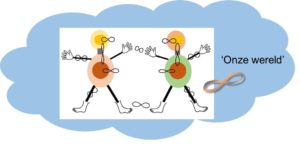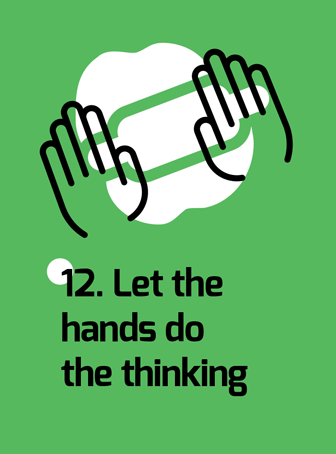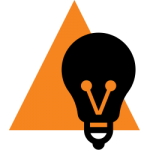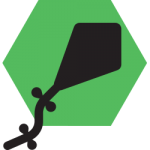
De Handstorm waardengestuurde ontwerpaanpak.
Sinds 2000 is aan de Technische Universiteit Eindhoven (TU/e) een specifieke waardengestuurde ontwerpaanpak ontwikkeld met aandacht voor waardevolle oplossingen voor Onze Wereld. De ontwerpaanpak wordt gekarakteriseerd door het label Handstorm® – niet alleen denken maar ook voelen en handelen. Het proefontwerp Handstorm principles for creative and collaborative working heeft vijftien pragmatisch gevalideerde ontwerpprincipes geformuleerd.
Ontwerpprincipes zijn interventies die ontwerpers verleiden tot creatief en interdisciplinair samenwerken. De logica van de beschrijving van een ontwerpprincipe volgt de CIMO-structuur: Contexten, Ingrepen, Mechanismes en Outcomes.
Deze promotiestudie richtte zich eerst op de vraag hoe een ontwerpleider een ontwerpbijeenkomst vormgeeft en leidt. Bij het afsluiten van de promotiestudie ontstond het besef dat er nog een 16e ontwerpprincipe nodig is, namelijk de houding van de ontwerper. Die houding wordt niet alleen bepaald door een aantal vaardigheden maar ook door een aantal waarden van Onze Wereld.
Energiestromen tussen inspiratiebronnen
Om ontwerpprocessen vruchtbaar te laten verlopen is het belangrijk dat er alle mogelijke bronnen worden aangesproken. Bronnen zijn de ervaringen en de kennis waar mensen bewust en nog deels onbewust over beschikken, datgene wat ze van waarde vinden, en de ideeën die ze al in hun achterhoofd hebben over oplossingsmogelijkheden.
Die bronnen kunnen op allerlei verschillende manieren worden aangeboord. Door denken, doen, bewegen, interactie met elkaar, enz. Door het aanboren van de bronnen ontstaan energiestromen – weergegeven door lemniscaten – die kunnen bijdragen aan het ontstaan van nieuwe, waarden gestuurde, onverwachte oplossingen.
De volgende energiestromen lopen tussen:
- Hoofd, hart en handen
- Binnenkant en buitenkant lijf
- Bewuste en onbewuste ervaringen
- Tussen de ontwerper en de anderen
- Tussen de ontwerper en ‘Onze Wereld’
Handstorm-gedachtengangen
- Het afwisselend inzetten van hart, hoofd en handen.
- Het voortdurend stellen van aanpakvragen.
- xxz
Handstorm-ontwerpkenmerken
- Wie zijn er allemaal betrokken?
- Inspiratiebronnen aanboren met allerlei ‘talen’.
- xx
DE HANDSTORM-PRINCIPES
Handstorm-principes zijn interventies die tijdens ontwerpbijeenkomsten
professionals verleiden tot creatief en interdisciplinair samenwerken.
De interventies stimuleren niet alleen samen nadenken,
maar ook samen ‘denken met de handen’ door bijvoorbeeld samen probeersels te maken.
Ook stimuleren de interventies professionals van elkaar te leren.
Plaats je muis op de kaarten hieronder om de uitleg te zien















DE KERNWAARDEN

Leergierigheid

Vindingrijkheid

Speelsheid

Synergie